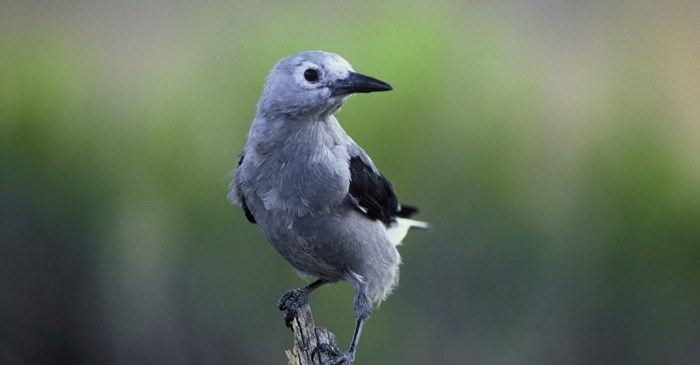If you live west of the Rocky Mountains, or if you're planning a trip in one of its many wooded areas, it’s worth familiarizing yourself with the Clark’s Nutcracker, a large, songbird with black and gray plumage.
The Clark’s Nutcracker is a member of the corvid family, making them relatives of crows and jays. Corvids have a reputation for being charismatic, intelligent birds and Clark’s Nutcrackers are certainly interesting for any birder to watch.
The Amazing Seed Storer
Pine seeds are the primary food source of Clark’s Nutcrackers. With their long, slender bills, they tear into a pine cone to retrieve the dozens of seeds locked inside.These seeds are so rich in nutrients that just a few satisfy a nutcracker. Then, an amazing process unfolds: the nutcracker tucks the seeds, sometimes more than a 100, into a special pouch beneath their tongues. They fly around the forest, visiting their many cache sites, burying 4-5 seeds in the ground at each spot. Each year, a single Clark’s Nutcracker can store tens of thousands of pine seeds. Even more impressive - using its phenomenal memory, it can recall just about all of its thousands of cache sites.
Of course, some of the seeds stored in the ground go unclaimed, which gives them a chance to sprout and grow. In that way, Clark's Nutcrackers play a key role in the proliferation of pine tree species, including the whitebark pine and the Colorado pinyon pine. So, if you've hiked through western pine forests, you've probably passed some trees planted decades ago by a Clark's Nutcracker!
Attracting Clark's Nutcrackers to Your Yard
If you live a mountainous area of the Western United States you may be able to entice Clark’s Nutcrackers to visit a feeder. Fill your feeder with Lyric Supreme Mix which has such a bounty of seeds and is sure to draw them and many others to your feeder.
